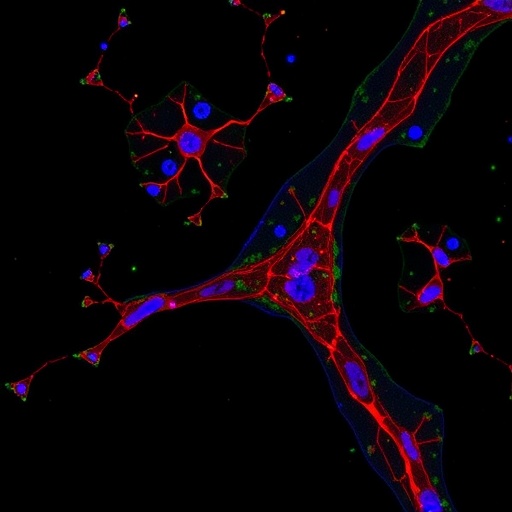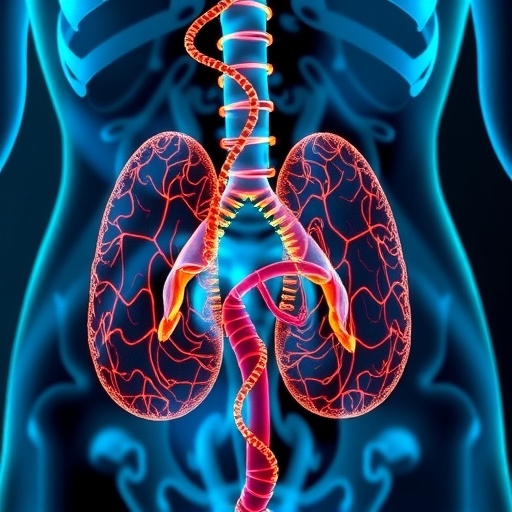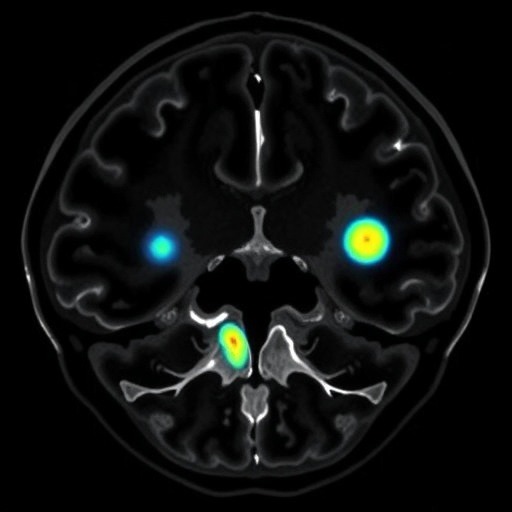In a groundbreaking study published in BMC Cancer, researchers have unveiled a novel molecular mechanism that undermines the metabolic resilience of osteosarcoma cells, one of the deadliest bone cancers predominantly affecting children and young adults. This breakthrough centers on the interplay between a long noncoding RNA (lncRNA) and a microRNA (miRNA) that collectively target key enzymes driving the Warburg effect—a hallmark metabolic reprogramming that fuels aggressive tumor growth and therapy resistance.
Osteosarcoma (OS) cells notoriously hijack their metabolism to sustain rapid proliferation and evade the cytotoxic effects of chemotherapy. The Warburg effect enables these cells to convert glucose into lactate even in oxygen-rich environments, producing energy and biosynthetic precursors at an accelerated rate. Blocking this metabolic adaptation has long been a therapeutic goal, yet the underlying regulatory networks have remained elusive, hindering drug development.
The research, led by Zhang and colleagues, employed an integrative bioinformatics approach analyzing transcriptomic data from OS patient samples (GEO dataset GSE126209), complemented by meticulous experimental validation. Their findings unveiled an intricate regulatory axis involving the lncRNA C1QTNF1-AS1 and miR-346 that converge to inhibit lactate dehydrogenase A (LDHA) and pyruvate dehydrogenase kinase 1 (PDK1), two pivotal enzymes orchestrating the Warburg effect.
Critically, miR-346 uniquely suppresses both LDHA and PDK1, the gatekeepers of aerobic glycolysis, restricting the tumor’s capacity to metabolize glucose into lactate. Meanwhile, C1QTNF1-AS1 acts synergistically to enhance miR-346’s tumor-suppressive functions, effectively orchestrating a dual blockade that precipitates metabolic collapse within OS cells. This dual inhibition impairs tumor bioenergetics and compromises the cells’ defensive mechanisms against chemotherapy-induced stress.
In vitro assays demonstrated that disrupting the C1QTNF1-AS1/miR-346 axis significantly curtailed OS cell proliferation, migratory potential, and invasive behavior, correlating directly with reductions in glucose uptake, lactate secretion, and intracellular ATP levels. These metabolic perturbations translated into heightened chemosensitivity, suggesting that targeting this axis could reverse resistance mechanisms that often doom OS patients to poor prognoses.
The mechanistic underpinnings of this axis center on LDHA’s role in converting pyruvate to lactate, sustaining the acidic microenvironment that supports tumor invasion and immune evasion. Concurrently, PDK1 inactivates the pyruvate dehydrogenase complex, diverting pyruvate away from mitochondrial oxidative phosphorylation and enhancing glycolytic flux. By repressing both enzymes, miR-346 reprograms the metabolic landscape from a Warburg phenotype toward oxidative metabolism, undermining the cancer cells’ survival advantage.
Most strikingly, the study provides compelling evidence of this regulatory network’s therapeutic potential in vivo. Animal models bearing OS xenografts revealed that restoring miR-346 expression curtailed tumor growth and potentiated the efficacy of conventional chemotherapeutics. These promising preclinical results illuminate a new path for RNA-based therapies targeted to disrupt tumor metabolism with precision.
Beyond its immediate translational implications, this research enriches our fundamental understanding of noncoding RNAs in cancer biology. The discovery that a lncRNA can modulate miRNA activity to fine-tune metabolic enzymes highlights the layered complexity of gene regulation in tumors. Such insights pave the way for multi-targeted approaches that leverage endogenous RNA networks for cancer control.
The therapeutic landscape of OS, historically constrained by limited treatment modalities and dismal survival rates, stands to be transformed through metabolic intervention strategies exemplified by this study. By exploiting the vulnerabilities of the Warburg effect, clinicians may soon harness multitarget RNA therapies with improved specificity and reduced systemic toxicity.
Future directions will undoubtedly focus on optimizing delivery systems for miR-346 mimics and antagonists of C1QTNF1-AS1, ensuring efficient tumor penetration and minimal off-target effects. Moreover, clinical trials will be essential to validate these findings and explore combinational regimens integrating RNA therapy with current chemotherapeutic agents.
This paradigm shift underscores the power of systems biology to decode the complex metabolic dependencies of cancer cells. As we inch closer to personalized oncology, unraveling such noncoding RNA networks offers hope not only for osteosarcoma but potentially for other malignancies driven by aberrant metabolic reprogramming.
In essence, Zhang et al.’s study redefines the battlefield of osteosarcoma treatment by identifying a pivotal RNA regulatory axis capable of sabotaging the tumor’s metabolic engine. This dual inhibition of LDHA and PDK1 disrupts the Warburg effect, presenting a promising molecular target to stifle cancer progression and overcome drug resistance.
This seminal research highlights the untapped therapeutic potential residing within the vast landscape of noncoding RNAs. As science delves deeper into these regulatory elements, the era of RNA-centric oncology therapies approaches reality, heralding a new dawn in cancer treatment strategies.
The discoveries presented provoke a reevaluation of current metabolic intervention approaches, urging researchers to consider simultaneous targeting of multiple glycolytic nodes to effectively starve malignant cells. The C1QTNF1-AS1/miR-346 axis sets a precedent for such multitarget strategies with unparalleled specificity.
Ultimately, this research paints an optimistic future where metabolic vulnerabilities of osteosarcoma are exploited through advanced RNA therapeutics, transforming patient outcomes and ushering in a new chapter in cancer precision medicine.
Subject of Research: Osteosarcoma metabolism and RNA regulatory mechanisms targeting the Warburg effect
Article Title: C1QTNF1-AS1/miR-346 axis suppresses osteosarcoma progression via dual inhibition of LDHA/PDK1-mediated Warburg effect
Article References:
Zhang, Y., Hou, J., Ding, K. et al. C1QTNF1-AS1/miR-346 axis suppresses osteosarcoma progression via dual inhibition of LDHA/PDK1-mediated Warburg effect. BMC Cancer 25, 1698 (2025). https://doi.org/10.1186/s12885-025-14935-x
Image Credits: Scienmag.com
DOI: 10.1186/s12885-025-14935-x
Tags: C1QTNF1-AS1chemotherapy resistance in osteosarcomainnovative cancer therapieslactate dehydrogenase A suppressionlong noncoding RNA in cancermetabolic reprogramming in tumorsmicroRNA targeting enzymesmiR-346osteosarcoma growth inhibitionpyruvate dehydrogenase kinase 1 inhibitiontranscriptomic analysis of osteosarcomaWarburg effect in cancer





